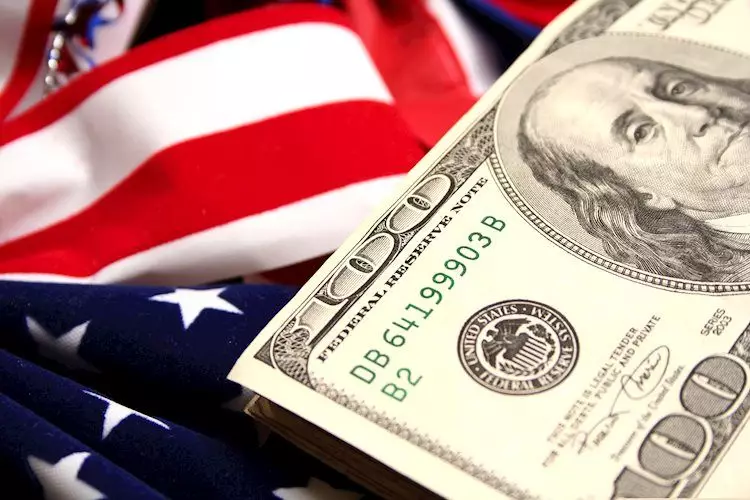The US Dollar’s status as the world’s primary reserve currency is under scrutiny as it prepares for a significant pivot at the upcoming Federal Open Market Committee (FOMC) meeting. A climate of uncertainty surrounds the Dollar, predominantly fueled by predictions of rate cuts, the anticipated dovish shift in monetary policy, and various economic indicators that may shape its future trajectory.
As market participants brace for the FOMC decision, the US Dollar Index (DXY)—which gauges the strength of the Dollar against a basket of six major currencies—has displayed signs of weakening. Currently, a 25 basis-point (bps) rate cut is the prevailing expectation, but a faction of analysts is speculating a more aggressive reduction of up to 50 bps. Such speculation is steeped in concern about the resilience of the US economy, particularly in the labor market, suggesting that the broader economic indicators remain robust despite potential signs of wavering strength.
The markets have begun to price in a 70% probability for a 50 bps rate cut. While this sentiment reflects a significant shift, analysts remain cautious, examining the implications of a more drastic reduction. If the Fed does opt for a larger cut, it may indicate a deeper concern about the economy’s health, which could further erode the Dollar’s strength in global currency markets.
At the heart of the FOMC meeting’s analysis is the Fed’s Dot Plot, which provides insight into the individual FOMC members’ perspectives on future interest rate levels. Observers will be particularly keen to identify any indications of a dovish pivot that could influence the Dollar’s prospects. An adjustment in the Dot Plot reflecting a more pessimistic outlook on the economy might steer traders towards bearish sentiments, compounding current Dollar weaknesses.
Furthermore, the communication style of Federal Reserve Chair Jerome Powell during the post-meeting press conference can shed light on the committee’s intentions. The language used regarding future rate policy could either bolster confidence in the Dollar or lead to adverse reactions in forex markets, depending on whether a more cautious tone prevails.
From a technical analysis standpoint, the DXY presents a negative outlook, as various indicators reflect bearish sentiment. The DXY’s movement below the 20-day Simple Moving Average (SMA) illustrates a decreasing momentum for buyers, signaling a potential shift in market dynamics. Additionally, the Relative Strength Index (RSI) is currently trending below the neutral threshold of 50, further substantiating a trend toward weakness.
The Moving Average Convergence Divergence (MACD) is also showing lower green bars, reinforcing the narrative of a bearish outlook for the Dollar. To understand potential price movement, support levels are identified at 100.50, 100.30, and 100.00, while resistance levels reside at 101.00, 101.30, and 101.60. These levels will be critical for traders monitoring short-to-medium-term Dollar performance.
To appreciate the significance of recent trends, it is essential to contextualize the US Dollar’s role in the global economy. As the most heavily traded currency, it facilitates an estimated $6.6 trillion in daily foreign exchange transactions, accounting for more than 88% of global FX turnover. Since the end of World War II, the Dollar’s ascendancy as the world’s reserve currency marked a pivotal shift after the decline of the British Pound.
The Dollar maintained its strength through various stages of monetary policy evolution, transitioning from the Gold Standard to a fiat currency backed primarily by trust in the US government and its economic policies. The Federal Reserve’s monetary policy—specifically, its approach towards interest rates—remains the most influential factor in determining the Dollar’s value on the world stage.
The Fed’s dual mandate emphasizes price stability and full employment, guiding its decisions on interest rates. In high inflation environments, the Fed typically increases rates, strengthening the Dollar. Conversely, in scenarios where inflation dips below target levels or unemployment surges, interest rates may be slashed, weakening the Greenback. Furthermore, unconventional measures like Quantitative Easing (QE) and Quantitative Tightening (QT) can significantly impact the supply and demand dynamics affecting the Dollar.
Although QE was employed extensively during the Great Financial Crisis to stimulate the economy, it can also lead to a softening of the Dollar’s value. Conversely, QT tends to bolster the Dollar by limiting the circulation of additional currency in the economy.
As the FOMC meeting approaches, the trajectory of the US Dollar hangs in the balance. The potential outcomes hinge not only on immediate rate decisions but also on deeper indicators reflecting the Fed’s outlook on the economy. Market participants should remain vigilant as they navigate the evolving landscape of the US Dollar, weighing the implications of the FOMC meeting and broader economic indicators on their currency strategies. Understanding these dynamics will be crucial in making informed decisions in an increasingly uncertain financial climate.

